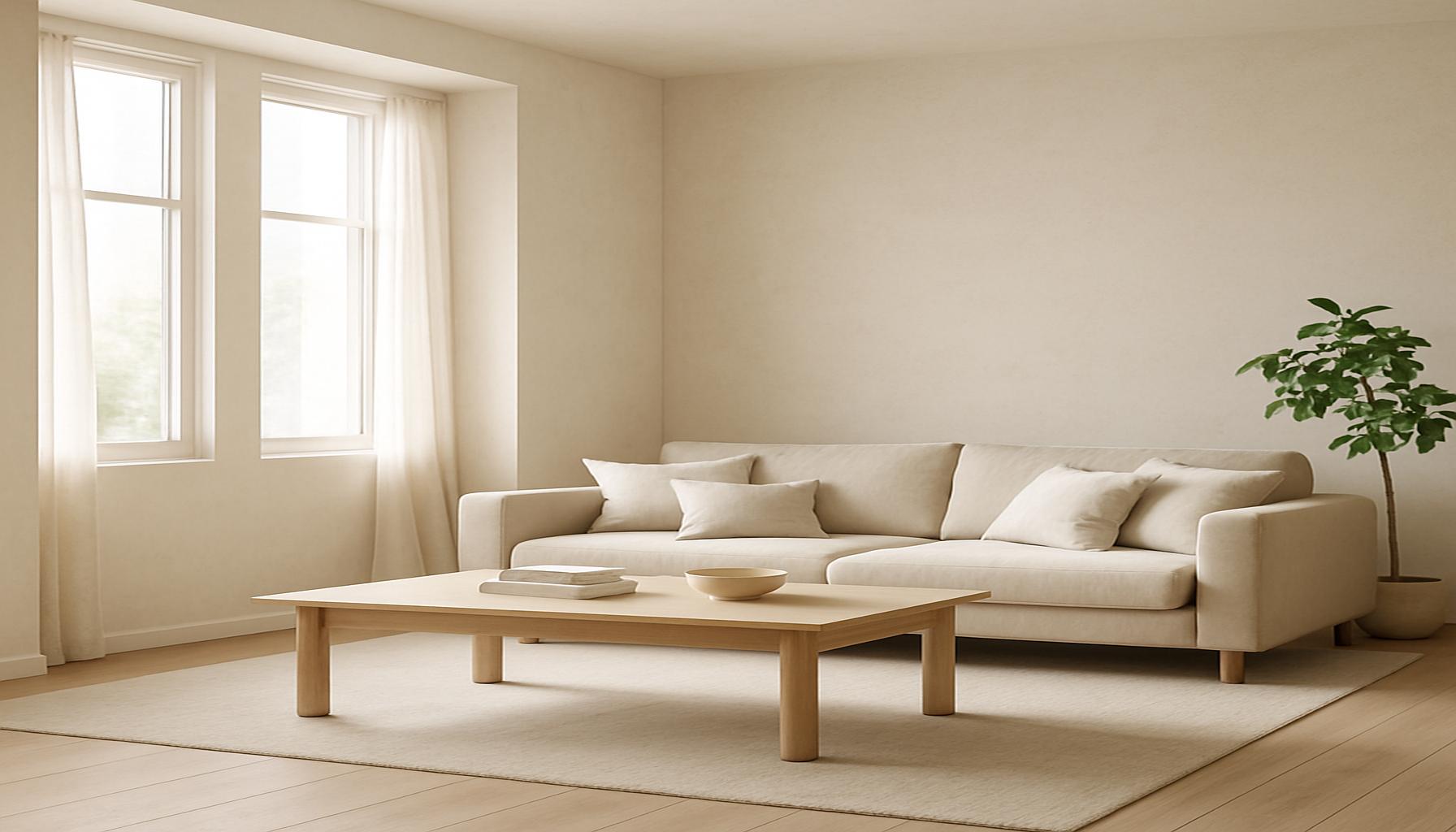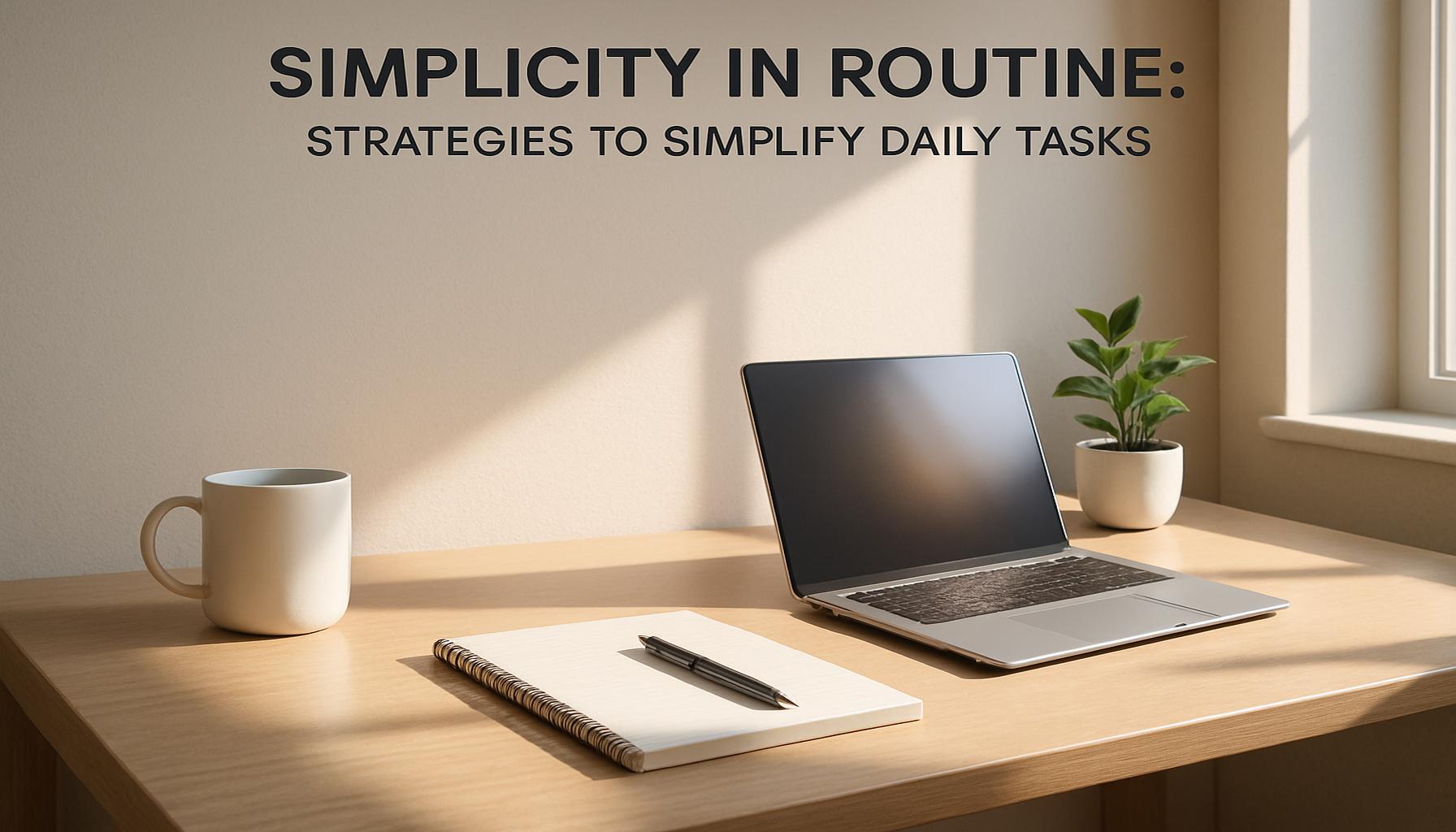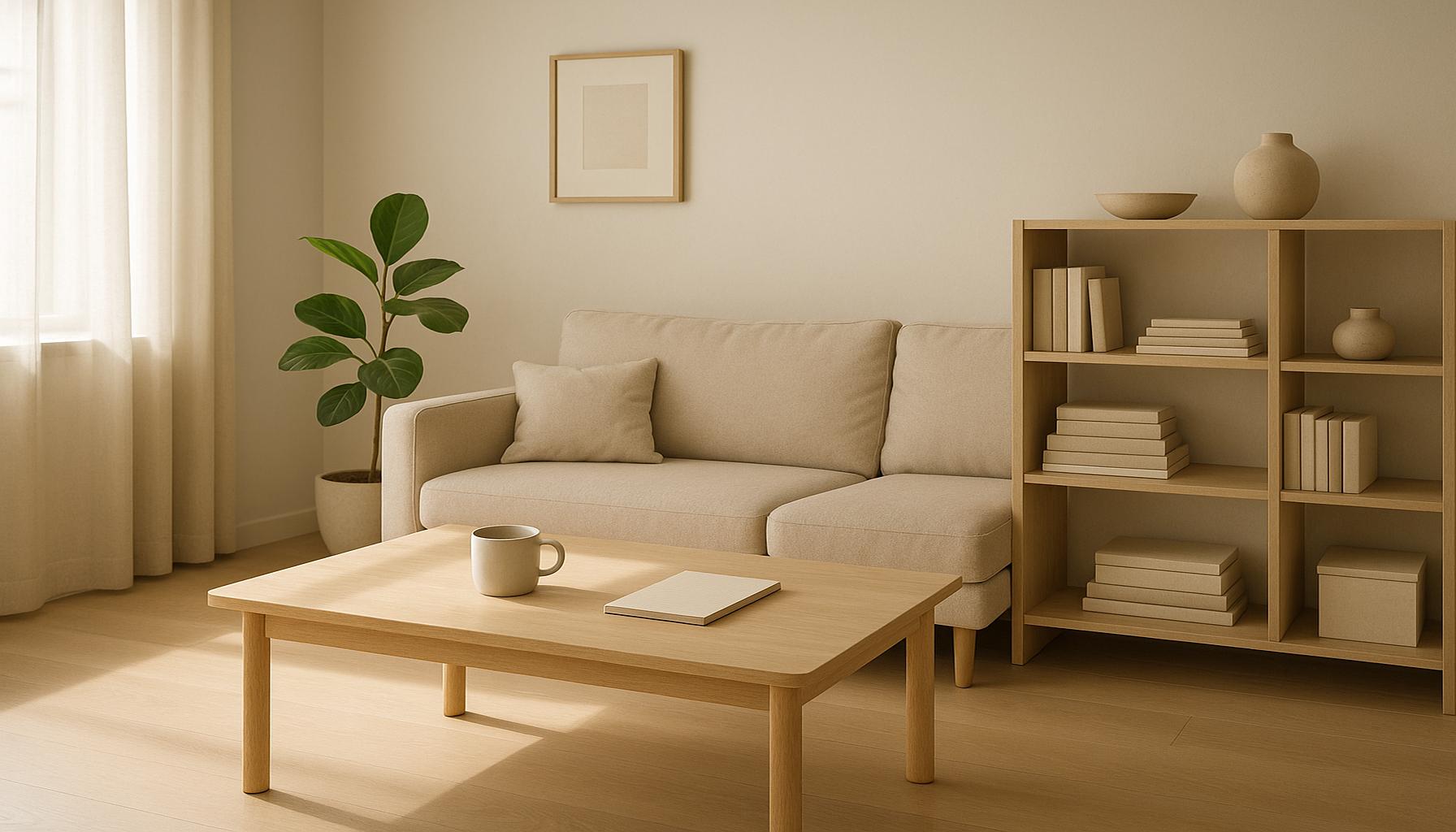The Aesthetics of Simplicity: How Decorating with Less Can Create Cozier Environments

The Allure of Simplicity in Modern Living
In a fast-paced world filled with distractions and the constant clamor for attention, many individuals are increasingly drawn to the peacefulness that comes with a simplified lifestyle. This trend is not just a fleeting fancy but rather a profound movement towards decorating with less, which has the power to transform ordinary spaces into tranquil sanctuaries. Minimalism emphasizes that embracing simplicity does not equate to sacrificing style; instead, it encourages a refreshing aesthetic that brings forth an inviting atmosphere of ease and comfort.
Key Principles of Minimalist Aesthetics
The philosophy behind minimalism is anchored in several core principles that guide the curation of each space:
- Functionality: Every piece of furniture or decor should serve a clear purpose. For instance, a stylish coffee table might also offer storage underneath, combining practicality with elegance.
- Natural Materials: Elements such as wood, stone, and soft textiles introduce warmth and visual interest, fostering a connection with nature. A reclaimed wood dining table not only becomes a conversation starter but also adds character to the room.
- Neutral Palettes: Colors like soft whites, grays, and muted earth tones create a soothing backdrop that makes spaces feel larger and more open. These palettes allow for easy integration of personal touches without overwhelming the senses.
The Emotional Impact of Simplified Spaces
Beyond aesthetics, the minimalist approach contributes significantly to emotional well-being. Research indicates that cozier environments with less clutter can lead to reduced anxiety levels and improved concentration. By creating spaces that prioritize functionality and tranquility, individuals are better equipped to engage in daily activities, enjoy quality time with family, or even delve into creative projects. For example, a decluttered home office can lead to increased productivity, as the mind is free from distractions.
Moreover, the minimalist approach fosters deeper connections, both with oneself and others. Stripping away unnecessary items allows for a focus on meaningful possessions and relationships. It emphasizes the idea that home should be a haven, a space where one can recharge and reconnect.
Exploring Your Own Space
As you contemplate the principles of minimalist design, consider the potential within your own living environment. Could a transformation through simplifying your decor lead to a more inviting and rejuvenating atmosphere? Think about the impact of each item in your home—does it serve a purpose or bring you joy? By answering these questions, you may uncover the emotional and aesthetic benefits of embracing less. A commitment to minimalism could be your gateway to experiencing more vitality and serenity in everyday life.
DISCOVER MORE: Click here to learn about intentionality in minimalist home design
Finding Harmony through Thoughtful Design
In the pursuit of creating cozier environments, the aesthetics of simplicity shine brightest when one embraces intentionality in design. This concept is rooted in the idea that a thoughtfully curated space can significantly enhance the overall mood and functionality of a home. The minimalist approach calls for a careful selection of each element, ensuring that every item serves a specific purpose while contributing to the overall atmosphere. By eliminating excess, individuals can better highlight the beauty of essential pieces.
Quality over Quantity: The Beauty of Handpicked Items
Embracing a minimalist style means prioritizing quality over quantity. Rather than filling a space with numerous decorative items, consider selecting a few carefully crafted pieces that resonate with your personal aesthetic. Countless artisans across the United States offer handmade furniture and decor that infuse character and depth into a room. A handcrafted ceramic vase or an artisan-crafted lamp can serve as statement pieces, becoming focal points that spark conversation while remaining functional.
In minimalist spaces, every item tells a story, whether it’s a vintage chair found at a local flea market or a contemporary painting from a regional artist. This narrative aspect not only brings warmth to a room but also fosters an emotional connection to the environment. Investing in fewer, higher-quality items allows for a more cohesive design that reflects personal taste while maintaining a serene atmosphere.
Clutter-Free Zones: The Space to Breathe
The art of decorating with less undeniably leads to the creation of clutter-free zones—spaces that invite relaxation and rejuvenation. Research supports that clutter can lead to feelings of stress and overwhelming anxiety. In contrast, an open and organized space encourages mindfulness and tranquility. To achieve this, consider implementing strategies for maintaining a minimalist environment such as:
- Regular decluttering: Set aside time each month to assess your belongings. Remove items that no longer serve a purpose or bring joy.
- Designated storage solutions: Utilize beautiful storage baskets or multi-functional furniture that neatly houses essential items while keeping surfaces clear.
- Intentional placement: Arrange furniture and decor in a way that promotes easy movement and a sense of flow, allowing each piece to shine without competition.
The essence of minimalist design lies in creating spaces that breathe amidst the noise of life. The key is to choose what you allow into your home and to cultivate an environment that speaks to your true self. As you move toward less, you’ll find that less truly can be more—more space to think, more room to enjoy, and more opportunities to engage with the beauty that surrounds you.
Rediscovering the Essence of Home
In collaborating with the principles of simplicity, you may uncover new layers of your living space. The minimalist path urges you to forge a connection with your surroundings and rediscover what home truly means. By thoughtfully selecting decor that resonates with your values and lifestyle, you are invited to create a more intimate, cozy environment—one where each moment feels special, and every corner reflects your serene state of being.
The Aesthetics of Simplicity: Creating Cozier Spaces
As society becomes increasingly fast-paced and cluttered, the movement towards simplicity in home decor emerges as a sanctuary for many. Minimalism invites a sense of calm and tranquility into our living spaces, encouraging individuals to focus on what genuinely matters. By embracing the philosophy of “less is more,” home decorators can transform their environments into havens of comfort and warmth.One of the key aspects of decorating with less is the emphasis on quality over quantity. When fewer items occupy a space, each piece can be chosen with intention, resulting in an aesthetic that feels curated and meaningful. This approach fosters a deeper connection with one’s belongings, as each item often tells a story or serves a purpose. For instance, a single, well-designed chair can become a focal point of comfort in a minimalistic room, contrasting sharply with the overwhelming chaos often induced by over-decorating.Moreover, the color palette in simpler designs typically relies on neutral tones that harmoniously blend with one another. Shades of white, beige, or soft gray create a serene backdrop, allowing natural light to breathe life into the space. These hues not only enhance the feeling of spaciousness but also make a room appear more inviting and cozy. Imagine a sunlit room with a few well-placed plants and clean lines; it becomes a sanctuary ideal for relaxation and unwinding.Furthermore, the use of natural materials—such as wood, cotton, and stone—can significantly contribute to the warmth of an environment. The texture and organic feel of these materials evoke a sense of homeliness that synthetic counterparts often lack. By incorporating furniture and decor items made from such elements, one can achieve an aesthetic that is both modern and rooted in nature.Interestingly, the trend of decluttering extends beyond physical objects. Many individuals are now seeking to reduce digital clutter as well. A less cluttered digital space, characterized by organized files and fewer distractions, complements the physical environments and contributes to overall well-being. Focusing on simplicity and creating cozy environments is not just a design trend but a lifestyle choice that promotes mindfulness and peace.To dive deeper into the potential of simplicity in home decor, consider exploring various themed approaches that celebrate minimalism. Whether it’s Scandinavian-inspired designs that emphasize functionality or Japanese Zen principles that promote tranquility, there’s much to discover. Embracing these ideas can lead to personal revelations and an enhanced appreciation for the aesthetic of simplicity.—
| Advantages | Key Features |
|---|---|
| Enhanced Tranquility | A less cluttered environment promotes relaxation. |
| Intentional Decor | Each piece carries significance, creating a personal space. |
DISCOVER MORE: Click here to transform your space
The Emotional Impact of Minimalist Spaces
One of the most profound impacts of minimalist design is its ability to transform the emotional landscape of a room. When spaces are decluttered and intentionally designed, they become sanctuaries for mental clarity and emotional respite. A study from the Psychological Science journal indicated that individuals exposed to clutter often report higher levels of stress. On the other hand, minimal environments can lead to improved focus and a heightened sense of calm, making them particularly useful in an era when stressors abound.
Color Palette and Texture: The Subtle Ties that Bind
Color and texture play a vital role in creating cozy, minimalist environments. While the notion of minimalism often evokes thoughts of stark whites and greys, embracing a well-thought-out color palette can add warmth and personality to a space. Soft, muted colors like sage green or dusty blue can instill a sense of tranquility, while natural textures such as wool, linen, and wood contribute tactile warmth that invites relaxation.
For example, consider using a neutral color base and layering varying textures through throws, cushions, and rugs. This combination not only enhances visual interest but also fosters a welcoming atmosphere. Trends in home decor confirm that a tactical mix of contrasting materials—like a matte finish paired with a polished one—can create opulence without sacrificing simplicity.
Natural Elements: Bringing the Outdoors In
Integrating natural elements into minimalist decor is another powerful avenue to cultivate coziness. Biophilic design, which focuses on the connection between humans and nature, has been linked to improved emotional well-being. Incorporating indoor plants, reclaimed wood accents, or natural stone can breathe life into minimalist spaces, making them more inviting. Studies suggest that plants not only purify the air but also enhance mood and concentration.
Simple additions like an indoor herb garden or a few strategically placed succulents combined with light, airy curtains can seamlessly bridge the gap between indoor comfort and outdoor beauty. By creating a dialogue between these two realms, you enhance the sense of hominess while adhering to minimalist principles.
Function Meets Aesthetics: Designing for Life
The allure of minimalist design lies in its practicality. A well-appointed room should not only be visually appealing but also functionally sound. This is where multifunctional furniture comes into play. Contemporary décor trends emphasize a shift toward items that marry aesthetic appeal with utility—think benches that double as storage or coffee tables with nesting features. These pieces not only declutter living areas but also enrich the overall design, making them essential in a space where every item must earn its keep.
Smart design choices can create a flowing, harmonious atmosphere that supports everyday activities while minimizing visual noise. Feature walls or open shelving with a few curated items can serve as artful installations, showcasing both your personal style and the principles of simplicity at work.
As we navigate the intricacies of home design, understanding the emotional and practical implications of minimalism opens up new avenues for crafting environments that feel less like collections of objects and more like tranquil retreats. Whether through discernment in selecting color palettes, appreciating natural materials, or opting for versatile furniture, adopting the aesthetics of simplicity transforms our spaces. It shapes not just how we feel in our homes but how we connect with our lives.
DISCOVER MORE: Click here to enhance your productivity
Conclusion: Embracing Simplicity for Cozy Sanctuaries
The journey toward creating a cozy environment through the aesthetics of simplicity is not just about eliminating clutter; it’s about finding balance and harmony in our living spaces. By embracing minimalism, we unlock the potential to create tranquil retreats that foster mental clarity and emotional well-being. Incorporating thoughtfully selected color palettes and rich textures invites warmth and personality, while the introduction of natural elements breathes life and vitality into any setting. The strategic use of multifunctional furniture enhances both aesthetics and utility, ensuring that our homes are both beautiful and practical.
As we face the ever-increasing pace of modern life filled with distractions, cultivating spaces that prioritize simplicity becomes essential. This design philosophy elevates our interactions with our surroundings, allowing us to appreciate the beauty of everyday moments. The trend toward minimalist decor signifies more than just a style preference; it reflects a growing recognition of the psychological and emotional benefits that come from embracing less.
In a world where excess can lead to overwhelm, prioritizing function, comfort, and tranquility through decor becomes a revolutionary act. As readers explore the art of minimalism, they may discover not only a new style of living but also a path toward a cozier, more connected existence. Advocating simplicity in our homes might just lead to more profound changes in how we approach life itself.


